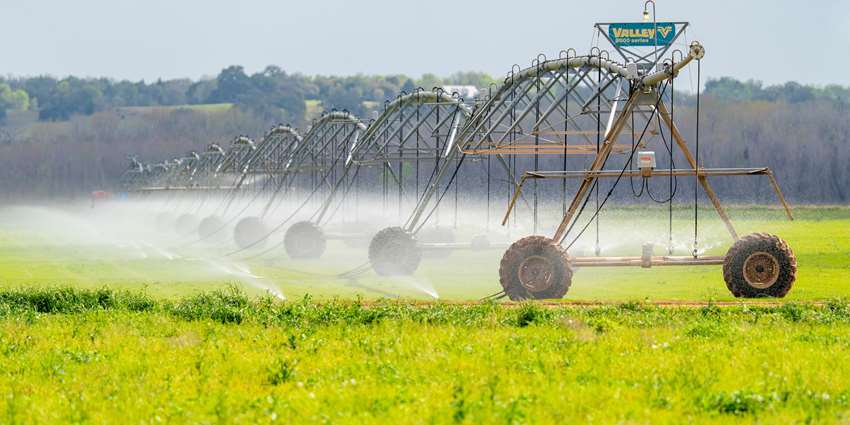(Photo by Michael Miller, Texas A&M AgriLife Marketing and Communications.)
Read recent peer-reviewed publications by Texas Water Resources Institute and Texas A&M AgriLife scientists:
A planning framework to mitigate localized urban stormwater inlet flooding using distributed Green Stormwater Infrastructure at an urban scale: Case study of Dallas, Texas: In a study co-authored by TWRI’s Bardia Heidari, Ph.D., and Texas A&M AgriLife's Fouad Jaber, Ph.D., researchers used modeling frameworks to evaluate the cost and effectiveness of stormwater management strategies for the City of Dallas. They found that a combination of Green Stormwater Infrastructure and traditional, or gray, stormwater infrastructure resulted in maximum overflow reduction at a lower cost compared to common practices.
Understanding perceived climate risks to household water supply and their implications for adaptation: evidence from California: Based on a statewide representative sample of California, TWRI’s Wendy Jepson, Ph.D., and co-authors, found that more than one-third of Californians report experiencing impacts of climate change on their household water supplies and showed that these reported impacts differently influence residents’ concern about future water supply reliability.
Evaluating the impacts of alternative grazing management practices on soil carbon sequestration and soil health indicators: A Texas A&M AgriLife Research team used the Soil and Water Assessment Tool-Carbon (SWAT-C) model to simulate the impacts of three grazing management practices — heavy continuous, light continuous and adaptive multi-paddock grazing — on soil organic carbon, soil health indicators and hydrological parameters at the ranch and watershed scales in Northwest Texas.
Predicting groundwater levels in Ogallala Aquifer wells using hierarchical cluster analysis and artificial neural networks: Texas A&M Biological and Agricultural Engineering professor Vijay Singh, Ph.D., co-authored research applying hierarchical cluster analysis to predict annual groundwater levels in 403 wells of the Ogallala Aquifer. Results revealed that the Ogallala Aquifer holds higher groundwater levels in the western part, which gradually decrease, advancing to the east.
Catch up on water-related research and news from universities around Texas:
Turning Lakes Into River Gauges Using the LakeFlow Algorithm: Co-authored by a Texas A&M Department of Geography scientist, this research introduces the LakeFlow algorithm, which uses river-lake mass conservation and observations from the Surface Water and Ocean Topography (SWOT) satellite to provide river discharge estimates of lake and reservoir inflows and outflows.
Assessing the impact of wastewater infrastructure along the Texas-Mexico Border: Did we make a difference on contagious diseases?: University of Texas at Austin researchers explore the impact of wastewater infrastructure on water-borne diseases along the Texas-Mexico Border since its improvements in the past two decades.
Shifting agriculture and a depleting aquifer: implications of row-crop farming on mule deer population performance: Caesar Kleberg Wildlife Research Institute at Texas A&M – Kingsville researchers determined what effect converting native vegetation to cropland has on mule deer populations throughout the Great Plains.
Texas Port Partners with UT Scientists to Store its Greenhouse Gas Emissions: Scientists at the Bureau of Economic Geology in the Jackson School of Geosciences are helping the Port of Corpus Christi determine if it can permanently store greenhouse gas emissions from industrial operations at the port beneath the seafloor of the Gulf of Mexico.
Tracking the post-disaster evolution of water infrastructure resilience: A study of the 2021 Texas winter storm: Researchers at the University of Texas at Austin conducted a study tracking the evolution of water infrastructure resilience in Texas before and after the 2021 severe winter storm.
Beyond the pipes: How user perceptions influence their water and wastewater infrastructure interactions in Texas Colonias: Scientists at the University of Texas used qualitative content analysis to explore how residents in colonias interact with water and wastewater infrastructure within their households.


